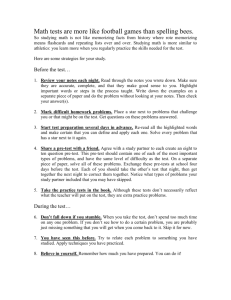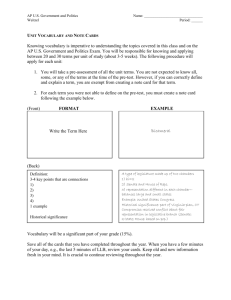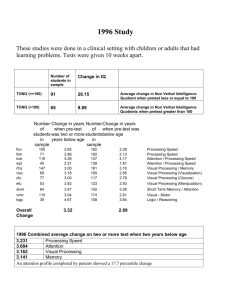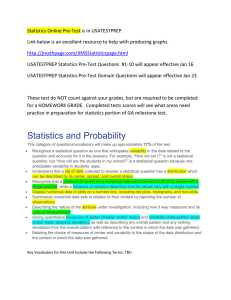Statistical Training - PRE-TEST
advertisement
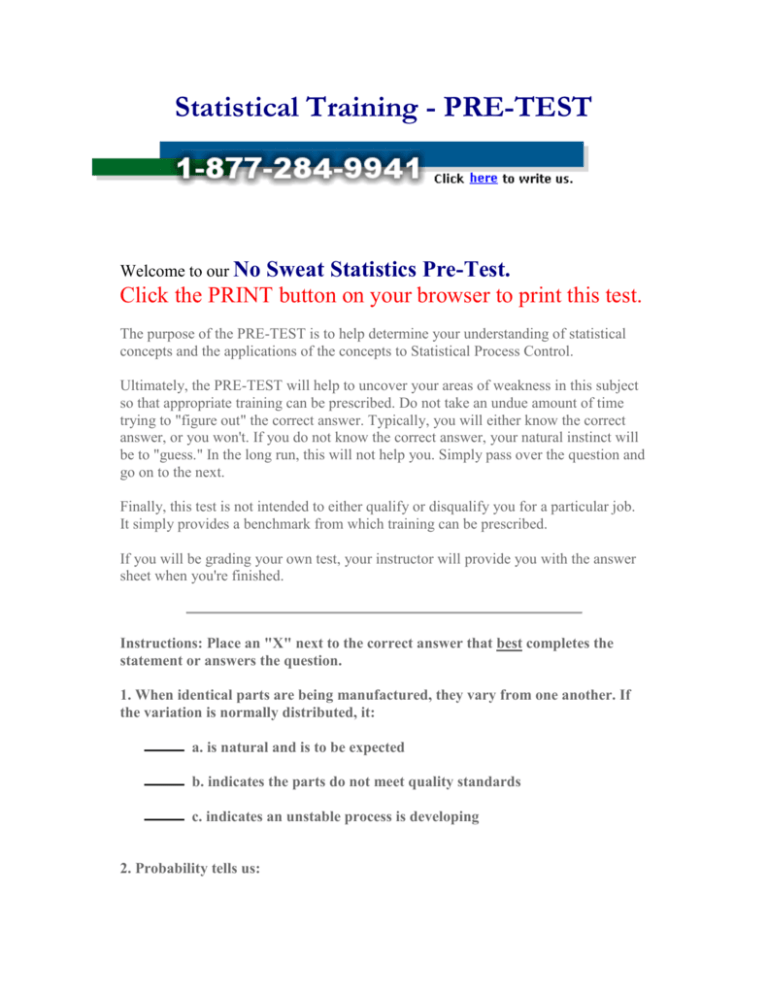
Statistical Training - PRE-TEST Welcome to our No Sweat Statistics Pre-Test. Click the PRINT button on your browser to print this test. The purpose of the PRE-TEST is to help determine your understanding of statistical concepts and the applications of the concepts to Statistical Process Control. Ultimately, the PRE-TEST will help to uncover your areas of weakness in this subject so that appropriate training can be prescribed. Do not take an undue amount of time trying to "figure out" the correct answer. Typically, you will either know the correct answer, or you won't. If you do not know the correct answer, your natural instinct will be to "guess." In the long run, this will not help you. Simply pass over the question and go on to the next. Finally, this test is not intended to either qualify or disqualify you for a particular job. It simply provides a benchmark from which training can be prescribed. If you will be grading your own test, your instructor will provide you with the answer sheet when you're finished. Instructions: Place an "X" next to the correct answer that best completes the statement or answers the question. 1. When identical parts are being manufactured, they vary from one another. If the variation is normally distributed, it: a. is natural and is to be expected b. indicates the parts do not meet quality standards c. indicates an unstable process is developing 2. Probability tells us: a. how often something actually occurs b. how often something is expected to occur c. the number of random samples it takes for an event to occur 3. Unnatural variation is normally the result of: a. expected variation in the process b. assignable causes c. product design choices 4. A histogram is a graph of: a. the past history of the process b. machine capability c. how often events or measurements occur 5. The normal distribution curve: a. is a picture of how products are distributed from a stable set of conditions b. provides accurate information about specification limits c. allows us to identify causes of variation 6. Write the correct number from the diagram above in the space below that describes what is being shown on the normal distribution curve. a. mean b. +1 standard deveiation c. -3 standard deviations d. represents 68.23% of the total values e. represents 95.5% of the total values 7. The mean is: a. The number of times an event occurs b. Shown on an "A" chart c. the average 8. The mean of a sample taken from a population: a. is written as b. is the result of measuring all the individuals c. determines process capability 9. Range is: a. the number of times an event occurs b. the difference between highest and lowest values c. shown on an chart 10. The variability of a group is described by: a. standard deviation b. population totals c. the value between the first and last piece produced 11. A "quality" product is one that: a. is within the specification limits b. meets the needs and expectations of the customer c. uses geometric dimensioning and tolerancing 12. Statistical Process Control: a. tracks the variability of products or services b. will solve the majority of quality-related problems c. is most useful during 100% inspection 13. The normal distribution of averages is: a. larger than the distribution of individuals b. narrower than the distribution of individuals c. the same as the distribution of individuals 14. A product's key quality characteristics are monitored: a. during final inspection b. within ± .001 c. using a control chart 15. Control limits on an are: a. the statistical words for blueprint tolerances b. based upon the distribution of sample averages c. used to determine process capability 16. Process capability studies: a. give information about how a process is behaving b. are most effective in determining whether or not SPC works c. require that a single machine be capable of producing at least 2 different parts 17. Values plotted as points on an chart are: a. individual values b. specification limits c. sample values 18. The pattern of points on an chart should show a normal distribution that: a. closely parallels individual measurements b. shows percent defective c. is within ± 3 sigma 19. The control chart above shows a pattern that is: a. in control b. out of control c. producing scrap 20. The control chart above shows a pattern that is: a. in control b. out of control c. producing scrap ANSWER KEY FOLLOWS Listed below are the answers to the No Sweat Statistics Pre-Test questions and the points earned by answering each question correctly. The total number of points that can be earned is 100 1. a (5 points) 2. b (5 points) 3. b (5 points) 4. c (5 points) 5. a (5 points) 6a. 2 (1 point) 6b. 3 (1 point) 6c. 5 (1 point) 6d. 1 (1 point) 6e. 4 (1 point) 7. c (5 points 8. a (5 points) 9. b (5 points) 10. a (5 points) 11. b (5 points) 12. a (5 points) 13. b (5 points) 14. c (5 points) 15. b (5 points) 16. a (5 points) 17. c (5 points) 18. c (5 points) 19. a (5 points) 20. b (5 points) Pre-Test courtesy of www.NoSweatTraining.com Telephone 1-877-284-9941

